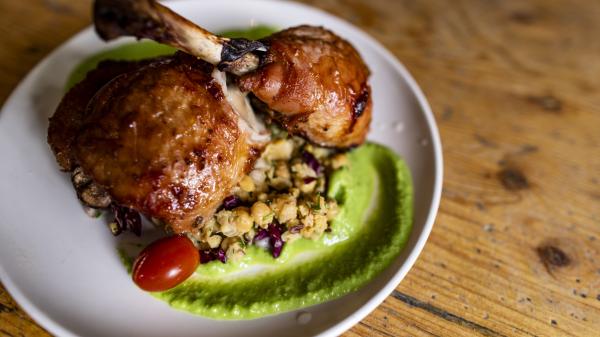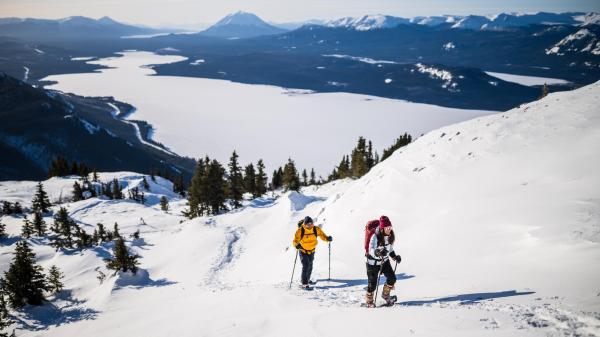
A surprising and vibrant food scene: Your guide to dining in the Yukon

Satisfy your appetite for more than just adventure
In a territory chock-full of diverse things to see and do, it’s no surprise the dining options are also a cornucopia of choices. While many are easy to find, there are a few gems hidden in unexpected places, like alongside a natural hot pool or in a historic building once home to a gold-rush era brothel—there were a lot of those back then.
The capital city of Whitehorse has the most choice for places to eat. In between museum visits or while waiting for the northern lights, you’re sure to spot some franchises you recognize from home, along with many dining options that could only possibly be found here.
Pop into one of the many downtown coffee shops serving a variety of baked goods, hot meals and locally roasted coffee—turns out the midnight sun may not be the only energizing influence. Food trucks mean you can grab and go, or enjoy your meal outside with a view. For dining, restaurants range from international cuisine like Thai, Jamaican and Greek, to those featuring northern delicacies like local Arctic Char and wild Alaskan salmon or halibut. Locally brewed beer, birch syrup and wild berries often also make appearances.
Even with all the choices in Whitehorse, the city doesn’t have a monopoly on great spots for a bite. Dawson City, Carcross and Haines Junction also boast some Yukoner favourites that can impress even the most seasoned Yelp foodie. There are also small cafes and lodges you can pop into for snacks or hot meals along the highways. They can seem few and far between, but are always a welcome sight for travellers on the long stretches of road.
The best way to experience Yukon dining is to enjoy it in as many different places as you can. Come on in, say hello and get a heaping helping of Yukon hospitality. No matter where you are, you’ll find even the most upscale dress code is never fancier than “Yukon formal”, which means your flannel shirt is fine as long as it’s your clean one.
Regions
Communities


